Research - (2021) Volume 9, Issue 8
The Equivalent Study to Assess the Stress Level mid Wives of Wives of Non- Alcoholics and Alcoholics in a Hospital in Chengalpattu
*Correspondence: AR Bharathi, Department of Nursing, Bharath Institute of Higher Education and Research, India, Email:
Abstract
To measure the physiological, social, economic, psychological and educational problems faced by wives of alcoholic dependence, To find out the association between the level of problems faced by wives of alcoholic dependence with demographic variables like age, education occupation, income, and pattern of drinking alcohol, To find the Linear regression between demographic variables with problems faced by wives of alcoholic dependence such as physiological and psychological problems. Among other substance or drugs, alcohol is the most frequently abused drug. Alcoholism is one of the major problems in this country and the world in general. This problem is affecting not only the person who is consuming alcohol it also affects all other people who are living around him. The spouses of the alcoholics are mostly affected. Stress has a negative impact on one’s mental and physical health. This study was conducted in a Government hospital at Chengalpattu, Tamil Nadu. Age, number of children, occupation, and monthly income, history of domestic violence and duration of alcohol consumption are the demographic variables studied. Documents collected from the wives were analyzed using statistical techniques. Due to alcoholics, the worst affected are their wives further study also shows that there is stark stress level in wives facing with native violence and husband excessive alcohol consumption shows severe stress in wives.
Keywords
Guilt, Hurt, Alcoholism, Hopelessness substance abuse, Addiction, Stress, AnxietyIntroduction
Day today life alcoholism is chronic inventive and regularly fatal disease. It is a primary disorder and not a symptom of other disease or emotional problems. The chemistry of alcohol allows it to effect nearly every type of cell in the body, including those in the central nervous system. When a person drinks alcohol, the alcohol is absorbed by the stomach cell, and then taken to the systemic circulation and goes to all the tissues. As well as the amount of food and alcohol consumed. The effects of alcohol intake include dizziness and talkativeness; the immediate effect of a larger amount of nausea, disturbed sleep, alcohol includes slurred speech, and vomiting. Alcohol even at low doses may significantly have impaired the judgment and coordination. Low to moderate doses of alcohol can also increase the incidence of variety of aggressive acts, including domestic violence and child abuse. In addition to this the drink also takes his whole family down with him. Substance abuse disorders, especially alcohol, are a matter of concern around the world. It has a strong impact on individual health, familial and social consequences, criminal and legal problems, and the effects on the national productivity and economy. Previous studies state that to completely wipe out or to minimize the usage of any kind of substance addiction, strategies covering many fields need to be designed [1]. Alcoholism has been a global health and social problem. Claimed to be one of the global risk factors, accounting for 1.5% of all deaths in the world and 3.5 % of disability adjusted life years and 4.0% of global burden of disease, alcoholism is a huge challenge to any society even now [2].
The continuous use of alcohol to the point of causing damage to the individual, society or both is known as Alcoholism [3]. The problem of excessive alcohol consumption is a major cause of public health concern both in urban and rural areas. It is the third leading mental health problem in the world today. Apart from affecting the physical and mental health of the individual consuming it, it largely affects his family in more than one way making alcohol- related family disruption a serious, complex and pervasive social problem [4]. Majority of the alcohol addicts belong to the male gender in our country. The reason for consumption maybe to overcome stress (caused due to familial, financial and psychological problems) but instead it turns out to become a vicious cycle which further stresses and burdens the individual and his family. Alcoholism seems to further decrease a person’s self-esteem and confidence [5]. In the words of Raymond Chandler, an alcoholic, a real alcoholic, is not the same man at all. You can't predict anything about him for sure except that he will be someone you never met before.” Recent developments and high paid jobs have in turn made consumption of alcohol a social pride. This raises concerns about the health and the social consequences of excessive drinking [6]. This addiction may affect people of any age group, social back ground or religion. Very often alcoholism affects highly educated people. Often the consumer does not feel that he is addicted [7].
Married individuals in which one or both spouses of alcoholic report higher levels of marital distress [8,9]. Effective communication is necessary for a successful marriage. But alcoholism is often linked with aggressive communication–through anger and indifference thereby affecting a good marriage and creating tension. As alcoholics are not able to do their daily chores, the complete burden on running the family falls on the spouse who increases their stress level enormously [6] and increases feelings of hatred, self- pity, avoidance of social contacts, exhaustion–both physically and mentally. This also affects the family financially and finally may lead to divorce [9]. Based on this, the present study was designed to evaluate the stress levels among wives of alcoholics and non-alcoholics.
Methodology
Setting of the study
The current study was conducted in a Government Hospital in Chengalpattu. From here we selected Psychiatric OPD where wives of alcoholic’s patients come to the clinic and male medical ward where patients with no history of alcoholism were admitted along with their wives.
Population
Population consists of wives of alcoholics who are visiting to psychiatric OPD along with their alcoholic husbands and wives of non-alcoholics’ who are staying along with their husband in male medical ward.
Sample and sampling technique
Non probability convenience sampling technique was selected for this study. OPD wives who are all available were selected as study participants.
Sample size
50 wives of alcoholics and 50 wives of non-alcoholics.
Wives of alcoholics
Age, type of family, duration of marital life, number of children, monthly income, occupation, educational status, religion, area of living, history of domestic violence, duration of alcohol consumption.
For wives of non-alcoholics
Age, type of family, duration of marital life, number of children, monthly income, occupation, educational status, religion, area of living.
Inclusive criteria
Wives whose husbands met with ICD 10 criteria of alcoholic dependence syndrome. Wives of whose husbands with no history of alcoholism. Wives who knows Tamil, English. Wives who are willing to participate.
Exclusive criteria
Wives who are suffering with psychiatric problems. Wives who are not willing to participate. Wives who selected for pilot study.
Pilot study
Pilot study steered from 4-1-2014 to 5-12-2014. Formal approval was obtained from the medical superintendent of the Government hospital, Chengalpattu. 20 samples were selected for pilot study 5 wives of alcoholic and 5 wives of non-alcoholics. A brief introduction about self and study was given to the wives and informed verbal consent obtained and the confidentiality of the response is maintained. Result of the pilot study shows p value=0.009 as p value <0.05 there is a significant difference in level of stress between wives of alcoholics and wives of non-alcoholics.
Data collection procedure
The data collection was planned for only four weeks i.e. from 10-12-14 to 11-1-15. Time schedule was planned from 10am to 4pm everyday minimum 7-9 members per day. Everyday demographic information was collected using the tool with demographic variables questionnaire through interview method, followed by the Sheldon Cohen perceived stress scale analysis, we assessed the stress level in both wives of alcoholics and wives of nonalcoholics.
Statistical analysis
Mean and standard deviation used to assess the level of stress. Chi-square test used to associate the level of stress with their selected demographic data.
The data presented in this Figure 1 shows the distribution of samples according to their age. The maximum number of wives of alcoholics 65.75% is from the age group of 31-40 years, 21.8% are in the age group of 20-30 years and 15.15% of wives are in the age group of 41-50 years and none of them found to be 51 and above. The maximum numbers of wives of non-alcoholics 42.85% in the age group of 20-30 years, 35.74% of wives are in the age group of 31-40 years, 15.8% are in the age group of 41-50 years and 4.91% are in the age group 51 and above.
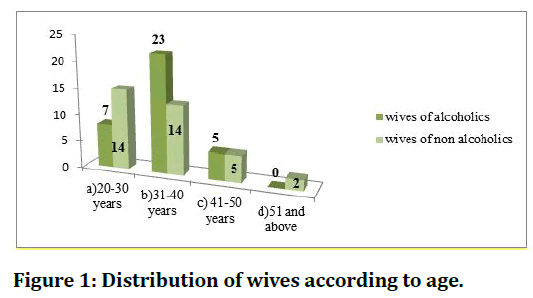
Figure 1. Distribution of wives according to age.
The data presented in this Figure 2 shows the distribution of samples according type of family. The maximum number of wives of alcoholics 72.57% is from nuclear family, 34.42% are belongs to joint family. The maximum number of wives of non-alcoholics 65.71% is belongs to nuclear family and 32.28% belongs to joint family.
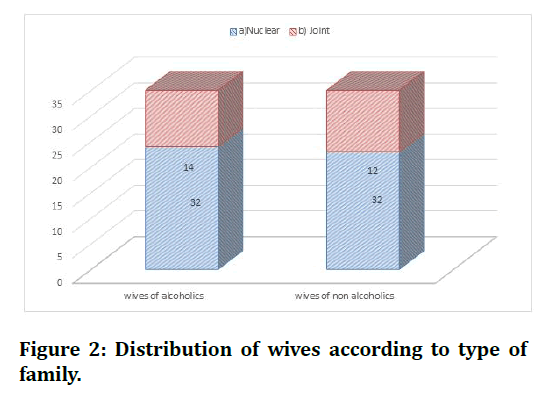
Figure 2. Distribution of wives according to type of family.
The Figure 3 represents that mainstream of the wives of alcoholics 44.83% were 11 and above of duration of marital life, 33.28% were of 6-10 years, 24.16% wives were of 0-5 years. Wives of non-alcoholic’s majority 45.71% were of 11 and above duration of marital life, 28.57% were of 0-5 years of duration of marital life, 27.71% were of 7-12 years of duration of marital life.
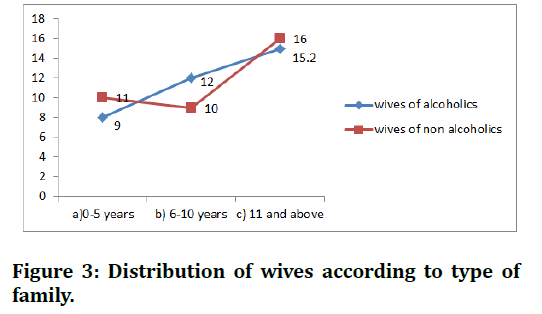
Figure 3. Distribution of wives according to type of family.
Figure 4 shows distribution of wives based on religion among wives of alcoholics 21 Hindus, 9 Christians, 5 Muslims and in wives of non-alcoholics 25 are Hindus, 9 Muslims, 1.5 Christian.
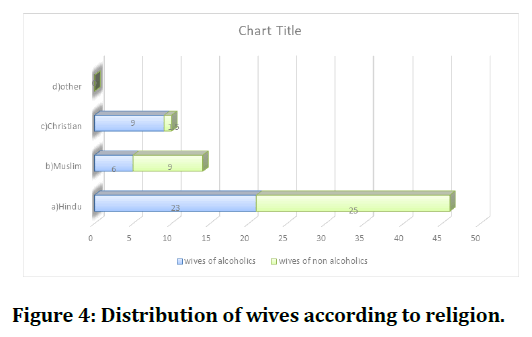
Figure 4. Distribution of wives according to religion.
Figure 5 shows the dispersal of wives based on area of living among wives of alcoholics 23 are living in rural areas, 15 in urban areas and in wives of non-alcoholics 25 in rural and 7 in urban areas.
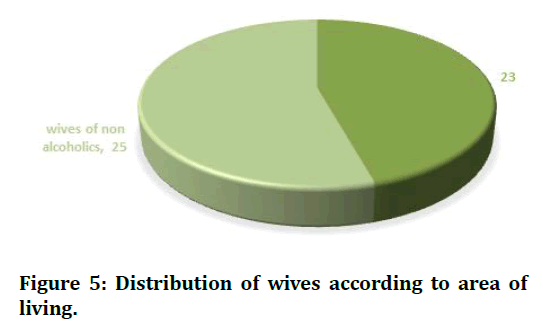
Figure 5. Distribution of wives according to area of living.
Figure 6 denotes the mean level of stress in wives of alcoholic’s for 40.13 rural and 40.14 urban. The Chi- Square 0.2 shows that there is no significant relationship between area of living and level of stress in wives of alcoholics.
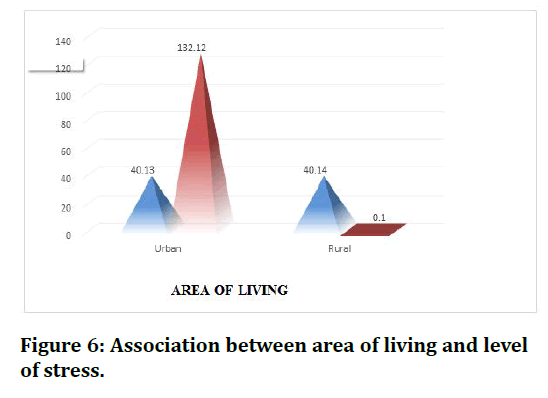
Figure 6. Association between area of living and level of stress.
Discussion
The purpose of the study was to assess the level of stress in wives of alcoholics and in wives of non-alcoholics. The research approach used was quantitative non experimental descriptive survey, study setting was conducted in community Ranipokhri Dehradun, population was the spouses of alcoholic dependents, and purposive sampling technique was used to choose the participant. Tool used was modified in four point Likert scale to assess the stress level among spouses of alcoholic men. Pilot study was conducted from 10% of entire population. Data collection process was done in the period of two days, whole research process was started with identifying subject participant permission was obtained from principal, purpose was explained to subject participants and consent were taken and administrated tools to 50 subject participant for data collection then proceeded for data analysis. Who concluded saying there is a significant high level of stress scores in wives of alcoholics than in wives of nonalcoholics [10,11].
The wives of alcoholics suffer a lot with their alcoholic husband resulting in various problems in wife. In this context we attempted to identify and measure the psychosocial problems of wives of alcoholics. It was conducted using a quantitative, descriptive survey method; data were collected from wives of hospital using a demographic data sheet, a four point rating scale containing 16 items to assess psychosocial problems of wives. In a study done in India, 90% of the female spouses of alcoholics exhibited high level of stress [12,13]. The mean coping score was high among the wives of Christian religion than the wives of Hindu and Muslim religion. The mean coping score was 19 high among the wives with illiterate husbands and with lower total family income. The coping score was high among the wives with out to determine the effectiveness of counselling on adaptive ways of coping among the wives of alcoholics.
The obtained “t” value is 11.2 and p value is 0.0001 as p value is <0.05 the study statistically significant. In Nagapattu village, Kancheepuram district, Tamilnadu a significant difference between stress level score of wives of alcoholics and wives of non-alcoholics was reported [14]. In India, the wives of alcoholics had health problems-genital disease, cardio vascular problems and psychometric disorders like stress, anxiety [15]. The chisquare value 0.001 shows that there is significant association between levels of stress with history of domestic violence. [16]. the chi-square value 0.001 shows that there is a significant association between levels of stress with history of duration of husband alcoholic consumption. In Salem, significant high level of domestic violence and suicidal risk was reported in the wives of alcoholics In accordance with the present study, it was reported that excessive partner alcohol use increased the risk of mental disorders in wives like depression, anxiety, stress In wives of alcohol dependent males versus abstainers/ social drinker wives in urban slum areas in north ward Mumbai, it is shown that there was a significant higher abuse in wives of an illiterate husband and the abuse was higher in illiterate and unemployed women Wives with higher level of domestic violence showed higher level of stress [17].
The present study shows that there is severe stress level in wives facing with domestic violence and husband excessive alcohol consumption shows severe stress in wives. Families of alcoholics experience guilt, shame, resentment, insecurity, delinquency, financial troubles, isolation, fear and violence. The impact of alcohol dependence on marital functioning and the psycho-social development of the members are the challenged problems to research. Among all the family members of alcoholic wives will face more problems. Couple-level research adds more information on contraceptive behaviour which may be useful for programmers and policy makers, like feelings of hopelessness, guilt, hurt, etc. Conveying changes in the attitude and behaviour of the alcoholics through individual therapy, family therapy, group therapy, occupational therapy activities such as music therapy, yoga, and meditation and relaxation techniques may support to an alcohol free society.
Conclusion
The study was descriptive in nature that there is severe stress level in wives facing with domestic violence and husband excessive alcohol consumption shows e identification of risk factors is essential for prevention. As drinking pattern vary considerably, the prevention of alcoholics is not easy. Educating the public, discussion and investigation of public attitudes may result in measurable improvement from different rural or urban slum area.
Funding
No funding sources.
Ethical Approval
The study was approved by the Institutional Ethics Committee.
Conflict of Interest
The authors declare no conflict of interest.
Acknowledgements
The encouragement and support from Bharath Institute of Higher Education and Research, Chengalpattu, Tamil Nadu, India is gratefully acknowledged for providing the laboratory facilities to carry out the research work.
References
- WHO. Global status report on alcohol, Geneva. WHO department of mental health and substance abuse 2004.
- Benegal V. Alcohol and public health addition. Indian J Psychiatr 2000; 100:1051-1056.
- Sharma SS. Social coping strategies among wives of alcoholics. J Nurses India 2009; 10:11-13.
- Christina C. Ranganathan, shanty. coping behaviour of wives of alcoholics. J Psychol Res 1988; 29:112-116.
- Cavanagh J, Masterton G. Suicide and deliberate self-harm. In: Johnstone EC, Freeman C, Zealley AK. (Edn.) Companion to psychiatric studies. 6th Edn. Churchill Livingstone: London 1998; 751-783.
- Edwards P, Harvey C, Whitehead PC. Wives of alcoholics: A critical review and analysis. Quarterly J Studies Alcohol 1973; 34:112-32.
- Niraja Ahuja. Text book of post graduate psychiatry. 2nd Edn. Jaypee Brothers Publication, New Delhi 2006.
- Kathy Neeb. Text book of fundaments of mental health nursing. 2nd Edn. Philedelphia: Fa Devi’s company 2001; 164-165.
- Jackson JK. The adjustment of the family of the crisis of alcoholism. Quarterly J Studies Alcohol 2001; 32:45-50.
- James JE, Goldman M. Behaviour trends of wives of alcoholics. Quarterly J Studies Alcohol1999; 46:76-81.
- Dittrich JE, Trapold MA. Wives of alcoholics: A treatment program and outcome study. Br J Psychiatr 2000; 29:23-26.
- Leonard KE, Roberts LJ. The effects of alcohol on the marital interactions of aggressive and nonaggressive husbands and their wives. J Abnormal Psychol 1998; 107:602-15 17.
- Murthy P, Manjunatha N, Subodh BN, et al. Substance use and addiction research in India. Indian J Psychiatry 2010; 52:189-99.
- Saraswathi, Ganesh Chathrdhi, Revathi MR. Women married to alcoholics. Kottayam district, Kerala. Kerala Nurses J 2010; 45–47.
- Pinto VN. Comparative study of domestic violence in wives of alcohol dependent males versus that in abstainers/social drinkers wives. Bombay Hospital J 2009; 51:203.
- Revathi. How women cope with alcoholic husband husbands in Chengalpattu. Nurs J India 2007; 4.
- Nayak MB, Patel V, Bond JC, et al. Partner alcohol use, violence and women's mental health: population-based survey in India. Br J Psychiatr 2010; 196:192-199.
Author Info
Department of Nursing, Bharath Institute of Higher Education and Research, Chennai, Tamil Nadu, IndiaCitation: AR Bharathi, The Equivalent Study to Assess the Stress Level mid Wives of Wives of Non- Alcoholics and Alcoholics in a Hospital in Chengalpattu, J Res Med Dent Sci, 2021, 9(8): 133-137
Received: 17-Jul-2021 Accepted: 11-Aug-2021
